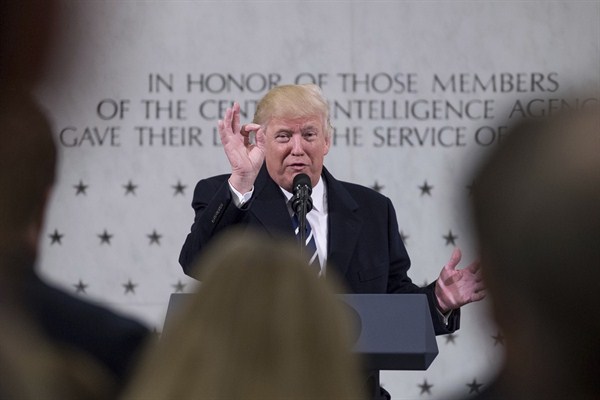Presidential transitions are always a time of apprehension and uncertainty for the career civil servants who keep the big machine of government running. President Donald Trump’s plans make this particular transition scarier than most. His performance at the CIA on Saturday, in particular, is an ominous sign.
Bureaucracy is often used as an epithet, usually conveying cautious, inefficient cadres that Trump considers part of the swamp he plans to drain. But in reality, bureaucrats are the career civilian workforce—2.5 million strong across the U.S., in Washington agencies and abroad—who keep the U.S. government functioning. Not always efficiently or transparently, to be sure, but most of the time, these workers are providing essential services to citizens. In the presidential transition, they are a source of continuity, expertise and institutional memory as the new administration fills political slots and determines its policy priorities.
By most accounts, the Trump transition is slower than usual. Of the 4,000 positions categorized as political appointments, 1,000 require Senate confirmation. So far, even the top 100 of these have not been named, and less than two dozen have made it to the formal nomination stage. It’s particularly important for foreign policy, since the Department of State has the largest number of political appointees, roughly 250 positions, with Justice a close second.

